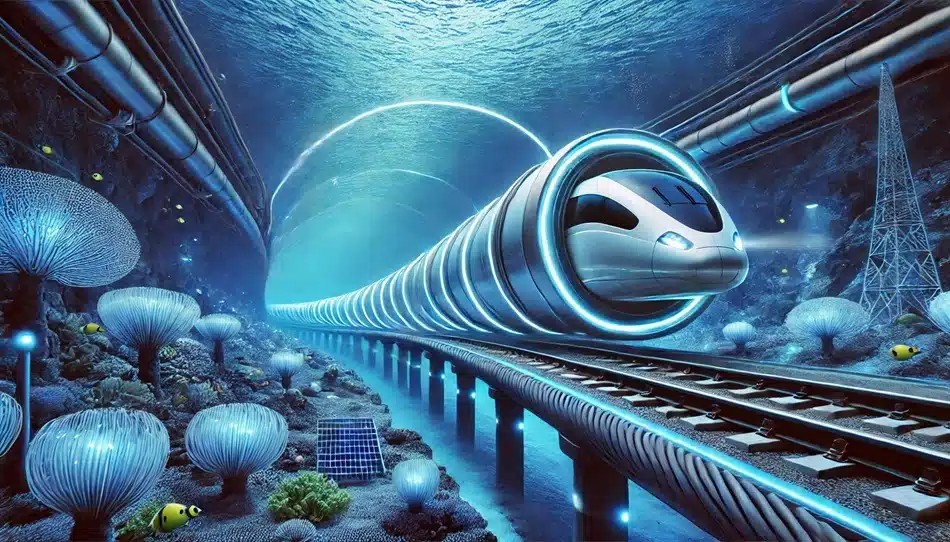The world’s richest man, Elon Musk, has revealed an interest in an incredible project that would see a $20 trillion hypersonic underwater tunnel between New York and London.
The project is like something out of a sci-fi film, and could see trains travelling at 3,000mph between the two cities.
The colossal speeds of the trains would mean the trip – currently an eight hour flight – would take just 54 minutes.
This means workers could travel between the two cities for face-to-face meetings or lunch and head home the same day.
It’s a massively ambitious project, and the scale and cost is so vast it presents a huge challenge, even for someone as rich as Musk.
Currently, no vehicle has ever come close to the speed of the trains being proposed, but Musk has shown a keen interest in “vacuum tube technology.”
Looking for a job? Visit whatjobs.com today
The Concept: A Transatlantic Tunnel
The idea of a “Transatlantic Tunnel” has been around for decades. Recent advancements in technology, however, suggest it may one day become possible.
Pioneers in vacuum tube technology, like Elon Musk, believe the key lies in reducing air resistance through innovative designs.
Vacuum Tube Technology
Musk has been a vocal advocate for vacuum tube travel. In 2013, he introduced the concept of a “hyperloop” in a white paper. The idea involves:
- Creating a vacuum environment within the tunnel.
- Using pressurized vehicles to eliminate air resistance.
This design would enable capsules to travel at unprecedented speeds, theoretically exceeding 3,000 mph.
Musk’s initiatives, such as student competitions and The Boring Company, continue to push the boundaries of tunneling and high-speed transportation.
Current Challenges
- Distance: The journey spans more than 3,000 miles.
- Construction Time: Building such a tunnel could take centuries. For context, the Channel Tunnel between France and the UK took six years to construct – that’s 31 miles. At that pace, a transatlantic tunnel might take 782 years.
- Cost: Estimates for the project reach as high as £15.5 trillion ($20 trillion).
Hiring? Post jobs for free with WhatJobs
How It Would Work
The technology behind the transatlantic tunnel is rooted in reducing drag and friction. Key components include:
- Vacuum Environment: Eliminating air resistance to allow higher speeds.
- Pressurized Capsules: Ensuring safety and comfort for passengers.
This approach could make the trip between London and New York possible in under an hour, a drastic improvement over the current eight-hour flight time.
Proposed Designs
Engineers have suggested various designs for the tunnel:
- Underwater Route: A tunnel built beneath the ocean floor.
- Floating Tube: Suspended by cables anchored to the ocean floor.
- Stilt-Based Structure: Elevated above the seabed.
Each design comes with its own engineering and environmental challenges.
Trials and Global Progress
While a transatlantic tunnel remains a distant dream, trials of hyperloop technology are underway.
Countries like India and China are exploring its integration into high-speed rail systems. If successful, this could pave the way for larger, more ambitious projects.
Environmental Impact
A transatlantic tunnel would likely be more efficient and environmentally friendly than air travel. Reduced emissions and the use of renewable energy could make it a sustainable alternative for long-distance transport.
Need Career Advice? Get employment skills advice at all levels of your career
A Distant Reality
Despite the excitement, experts warn that the Transatlantic Tunnel is unlikely to materialize any time soon.
The sheer scale, cost, and construction challenges make it a project for future generations.
Yet, the progress in hyperloop technology and global interest in high-speed travel hint that such innovations are no longer confined to fantasy.
The journey toward connecting London and New York in under an hour may take centuries, but each technological breakthrough brings us closer to making the impossible possible.




